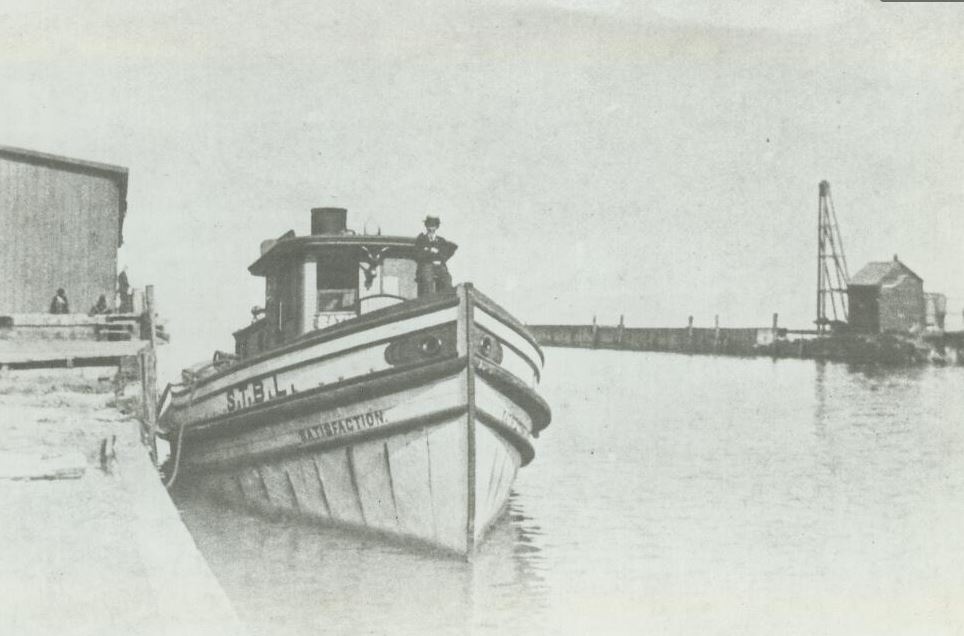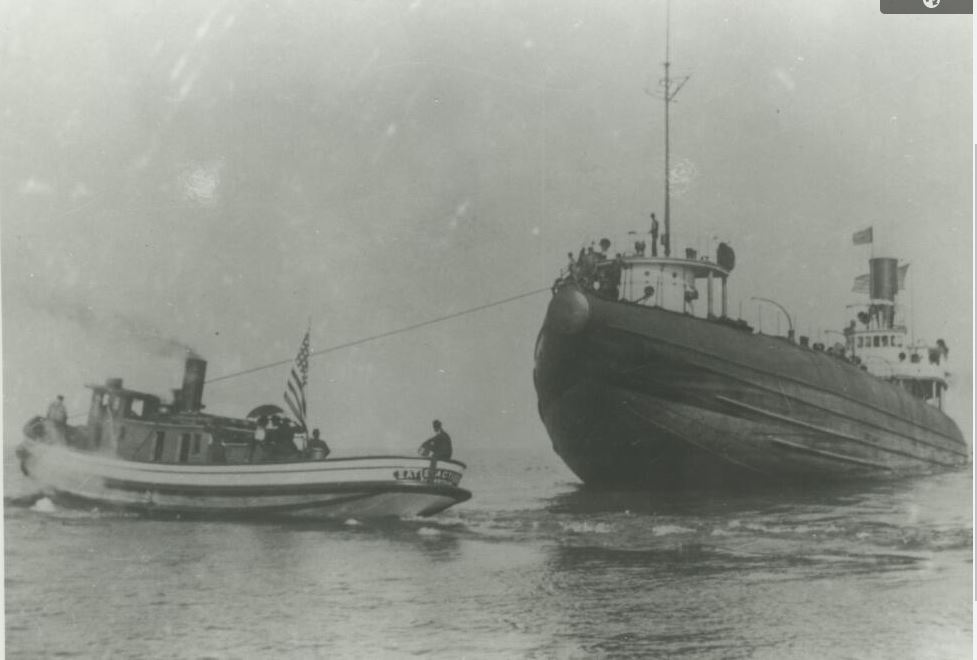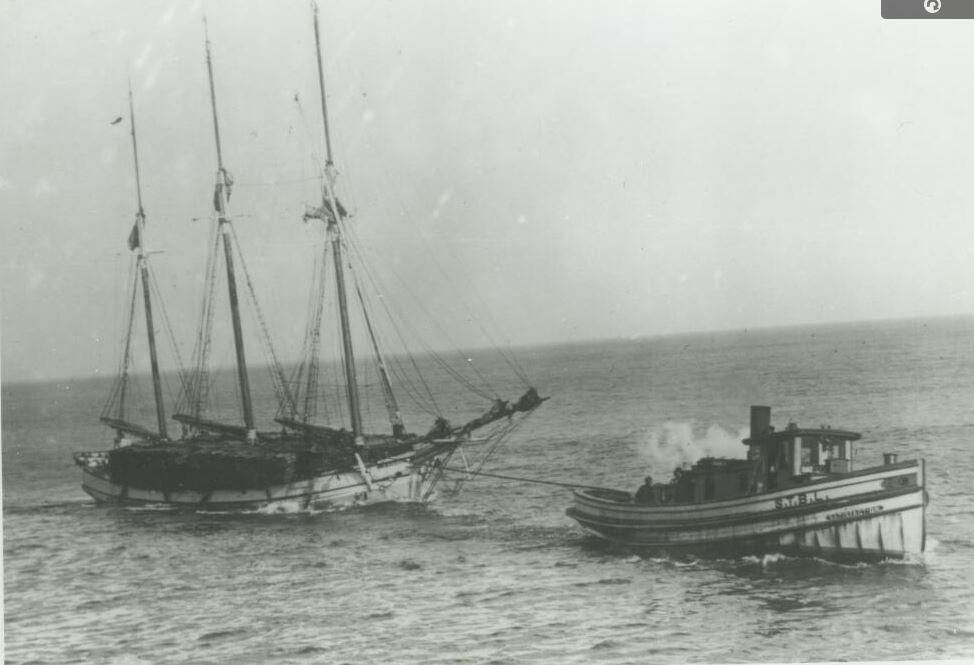Service History
The
Satisfaction was a wooden fishing tug built in 1894 at Sheboygan, Wisconsin by Rieboldt, Wolter and Company (eventually becoming Bay Shipbuilding out of Sturgeon Bay). Her official registry number was 116628. The dimensions were 64.0 x 16.0 x 8.0 feet and she had a single cylinder, 150 horsepower steam engine. The
Satisfaction served the fishing trade for over 25 years until she was purchased by Greiling Brothers Company in 1922 who used her for towing. In 1930 she was owned by the Waterways Engineering Company who eventually stripped her machinery and left to sink at their dock in 1946 or 1947.
Final Voyage
The fishing tug
Satisfaction was dismantled at Green Bay in 1946 or 1947 at the Waterways Engineering Companay's dock; her remains were left to sink close to where the tug
Bob Teed would later end up. The wooden hull rested parallel to the shore with the bow facing upriver toward the railroad bridge. All machinery had been salvaged and there was no evidence of any structure above the bottom mud sediment.
Today
There were five submerged shipwrecks in this former ship boneyard,
Bob Teed,
Satisfaction,
Texas along with the remains of two rectangular wooden barges. They had been scuttled in the early 1900's. One of the wood barges had an unusual steel frame rather than the typical wooden frame. These wrecks were located along the western shoreline of the Fox River, adjacent to the former Shell Property in Green Bay between the two railroad bridges, just north of the southern railroad bridge. The wrecks were in loosely packed mud in approximately two to four feet of water.
A significant problem came to light. PCBs were detected in the mud on the bottom of the Fox River and in the wreckage which presented a significant health and environment hazard. Green Bay area paper companies were required under federal orders to remove the contamination. Starting in April of 2009 a 13 mile stretch was dredged and capped with sand and gravel. The five wrecks needed to be removed to complete the project. The wrecks were hauled to a landfill south of Green Bay. The removal of the wrecks, which took place between late 2013 and early 2014, was extensively photographed and documented. The ship's legacy was made public through an agreement with the State Historic Preservation Office, the DNR and the Neville Public Museum. A selection of the hundreds of photos taken of the process are on display at the Neville Museum.




 Confirmed Location
Confirmed Location
 Unconfirmed location
Unconfirmed location